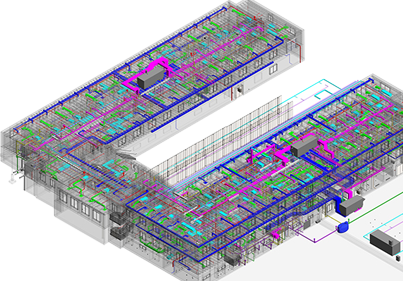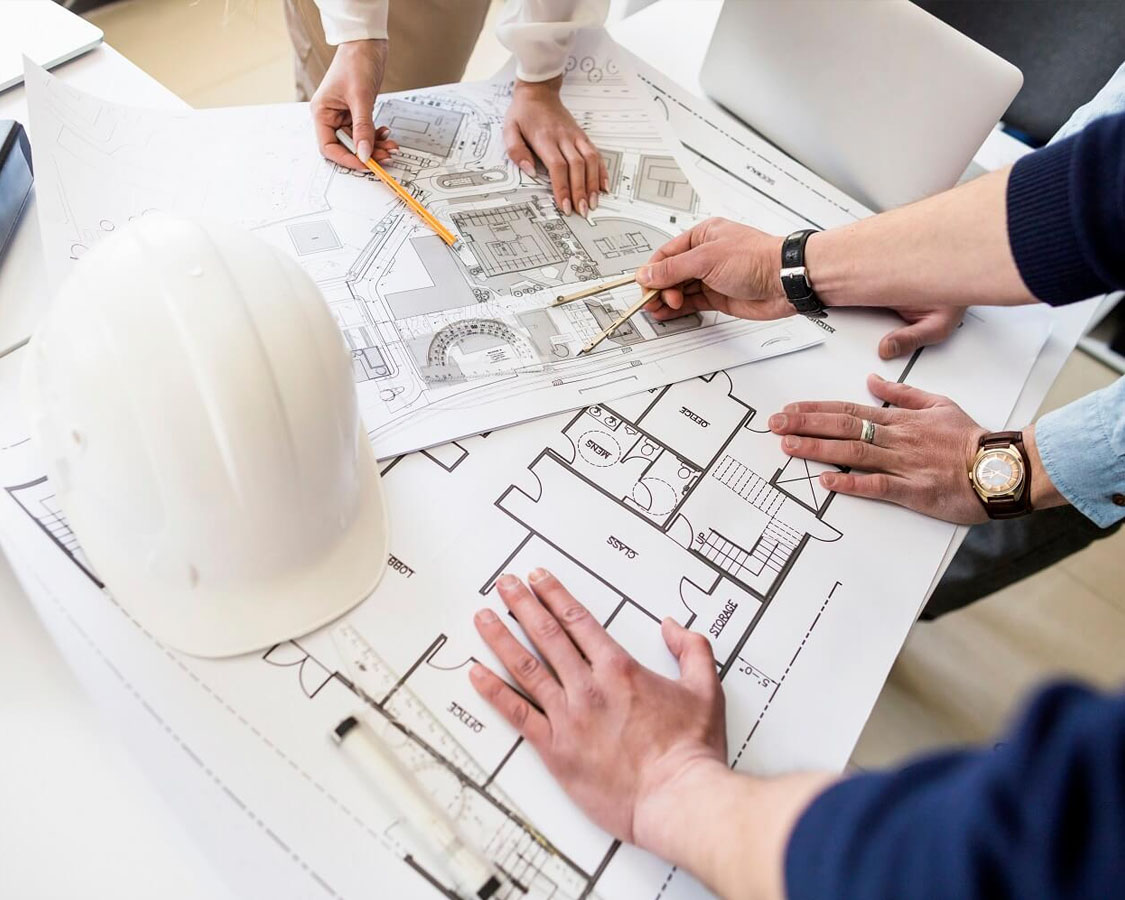BIM Clash Detection and its necessities.
The BIM Clash Detection program monitors collisions and interferences while handling conflicts between several BIM models.By identifying conflicts between different models during the design phase, the BIM (Building Information Modeling) approach of clash detection speeds up projects. It enables designers and builders to minimise the effects of multi-level design modifications, which can cause project delays and expense overruns. The automated and computerised detection of disputes or confrontations is called clash detection in BIM. Finding conflicts or clashes during construction is a crucial skill for designers, architects, builders, engineers, and contractors. Adopting BIM will make engineering, architectural, and construction organisations future-ready. BIM services will allow businesses to adapt their data requirements as their demands evolve and stay current. Therefore, BIM clash detection plays a significant role in your construction project.
Our Diverse Assortment of BIM Clash Detection Services in Canada
MEP Clash Detection Services
We identify and resolve conflicts between mechanical, electrical, and plumbing systems. Our MEP Clash Detection Services validate the perfect functionality of MEP systems.
HVAC Clash Detection Services
Our team develops clash-detected 3D models for optimal air regulation. We offer HVAC Clash Detection Services to facilitate smooth HVAC installation with other building components.
3D BIM Clash Detection Services
We extensively conduct Clash Detection in BIM to locate conflicts in a 3D environment. Our 3D BIM Clash Detection Services help minimize rework and delays.
Revit Clash Detection Services
Silicon Engineering Consultants Canada perform rigorous clash detection in Revit to validate high accuracy. Our Revit Clash Detection Services include clash-free 3D models that imply smooth unification of all building models.
BIM 360 Coordination Clash Detection Services
As a leading BIM Clash Detection Services Providers globally, we deliver custom BIM 360 Coordination Clash Detection Services to help architects detect and resolve clashes in real time.
What is the Hard clash in BIM?
When two structural elements of a structure cross or pass through one another, a hard collision results. Physical interference between fixtures X and Y are federated in the model developed during a collision. BIM software automatically identifies these clashes and reduces the requirement for rework. For instance, a window frame crossing a column might result in a severe crash.
What is the Soft clash in BIM?
A gentle collision essentially involves differences in space. Hard crashes are more damaging than soft collisions, caused by the placement of building materials. In BIM, a soft collision occurs when an object's "buffer zone" is crossed. These tiny incompatibilities may be found and avoided because of the high level of detail using BIM Modelling Software. Examples of mild conflicts include: A column blocking a doorway.
What is the Workflow Clash or 4D Clash BIM?
Conflict over workflow occurs in the fourth dimension. Including a timetable for the 3D model that stakeholders use as part of BIM is known as 4D scheduling. When building information is inaccurate or inconsistent, there is a workflow conflict in BIM. Any scheduling issues with contractors, delivery conflicts, or other schedule conflicts can be found using this form of clash detection—for example, booking large shipments for a precise time and date.
Our Delegation & Perception towards BIM Clash Detection! We are the world's best construction and building company.
Scope & Significance of BIM Clash Detection
Construction has always been tremendously complicated since many components and individuals simultaneously work on similar projects. It's simple to understand how conflicts may arise when considering the web of participating personnel, the necessity for efficient labour, and the need to finish a project within the projected time. Clash detection is a vital component of a recently created modelling method known as Building Information Modelling or BIM.
Building information modelling (BIM) is a method that spans a construction project's whole lifecycle, from inception through completion and beyond.

The fundamental concept of BIM is the revolution of the building model. The coordinated approach combines an extraordinary amount of information. Due to these ground-breaking benefits, BIM projects may identify and prevent conflicts earlier than conventional techniques. AEC relates to figuring out where building project components can cross paths and cause delays.
How is BIM Clash Detection Advantageous for your project?
Accurate Design Documentation
Designers and architects quickly develop intricate construction designs without much concern about the quality of construction documents. Because conflict detection and BIM software suites are so sophisticated, any changes made to one part can mirror all the views. Additionally, because everything is synchronised, information transfer occurs without hiccups, saving manual labour and increasing efficiency./p>

Fewer iterations
During construction, more periodic adjustments are made for planning, visualising, and controlling with BIM throughout the design stage; construction tweaks are needed more often. In addition, early conflict identification makes the 3D model easier, enabling teams to work together for conflict-free issue resolution.

Improved Team Coordination and Collaboration
Teams may exchange and work together more easily on the same project because of the digitised collision detection method. Due to BIM & conflict detection with Navisworks, quick information transmission for simplified cooperation between members of diverse design, construction, electrical, and engineering disciplines is feasible. In addition, the building process becomes faster, better, and more efficient in reviewing and markup feature with a real-time reflection into all the graphics.

Conflict & Automatic Clash Resolution
Modern BIM toolkits automate multi-element clash detection. On-site disputes are reduced since all the components, although made off-site, exactly fit into one another because BIM allows architects and engineers to model everything beforehand.

Integrated & Simplified Approach
An architect or building designer might comprehensively understand a project using a central BIM modelling method. However, it evolves difficult for the creative unit to envision the originality of the project's success. Greater transparency and a productive way to work with other project stakeholders are possible through BIM conflict detection.

BIM Clash Detection Report through Navisworks
-
Step 1
A conflict report is consistently produced using AutoDesk's Navisworks to compare two design models. The Navisworks software initially uploads the preexisting design model from the first discipline. Then, we might choose two design models in the coordinated model to create possible conflicts between them. -
Step 2
Our dynamic BIM coordination services assist in balancing the many design components that go into producing a BIM model of the project's design. Our utilization of cutting-edge techniques and cutting-edge technology enhances value for clients. -
Step 3
The next step is to choose these two models from the loaded models and begin the conflict detection procedure. Then, finally, performing the clash test and naming this report. -
Step 4
Following the scan, the system presents all possible conflicts between those models, with status information, descriptions, and conditions based on severity. When rerunning the test after a design change, it must present its state as new, active, authorised, and resolved.

Upload your Plans Here!
Engineering design has undergone a comprehensive transformation because of BIM Clash detection. The technology provides a lifeline for an industry with hundreds of problems by empowering everyone to visualise, analyse, and avoid confrontations in advance.
In addition, BIM and conflict detection have made the life of architects easier by enabling them to oversee and regulate many parts without sacrificing originality at the last minute to complete a project. Contact us if you want to use BIM in your most recent project. We would be delighted to assist.
Frequently Asked Questions
-
What creates a hard collision in BIM, and what does it mean?
When two structural elements of a structure cross or pass through one another, a hard collision results. For instance, a window frame crossing a column might result in a severe collision.
-
Who oversees the clash detection process?
One of the most routine duties of a BIM Coordinator is identifying and addressing conflict concerns and dealing with several project stakeholders, given when working on significant projects.
-
What does 3D Clash Detection mean?
A robust 3D coordination technology called clash detection enhances project outcomes by fostering teamwork and minimising delays and rework.